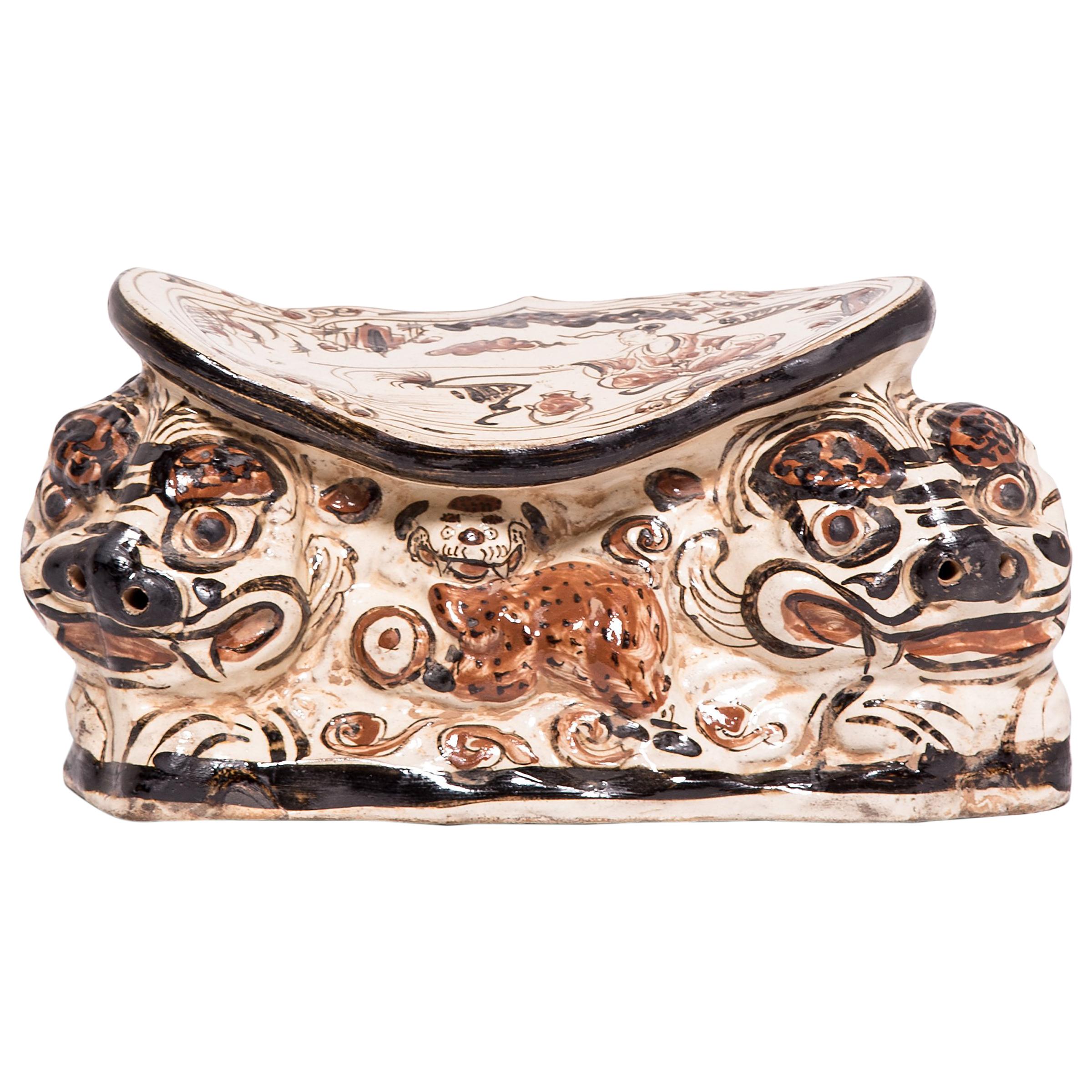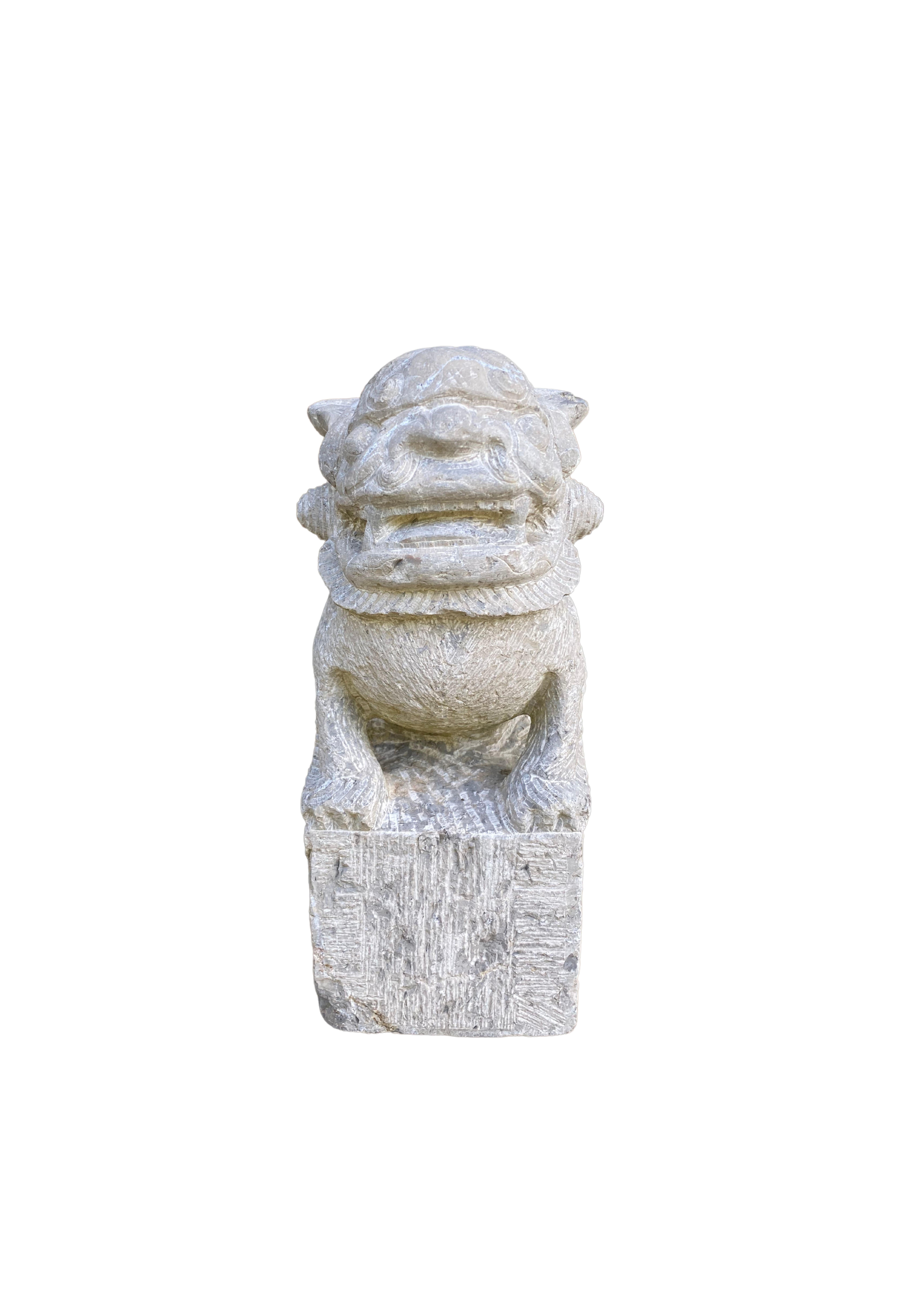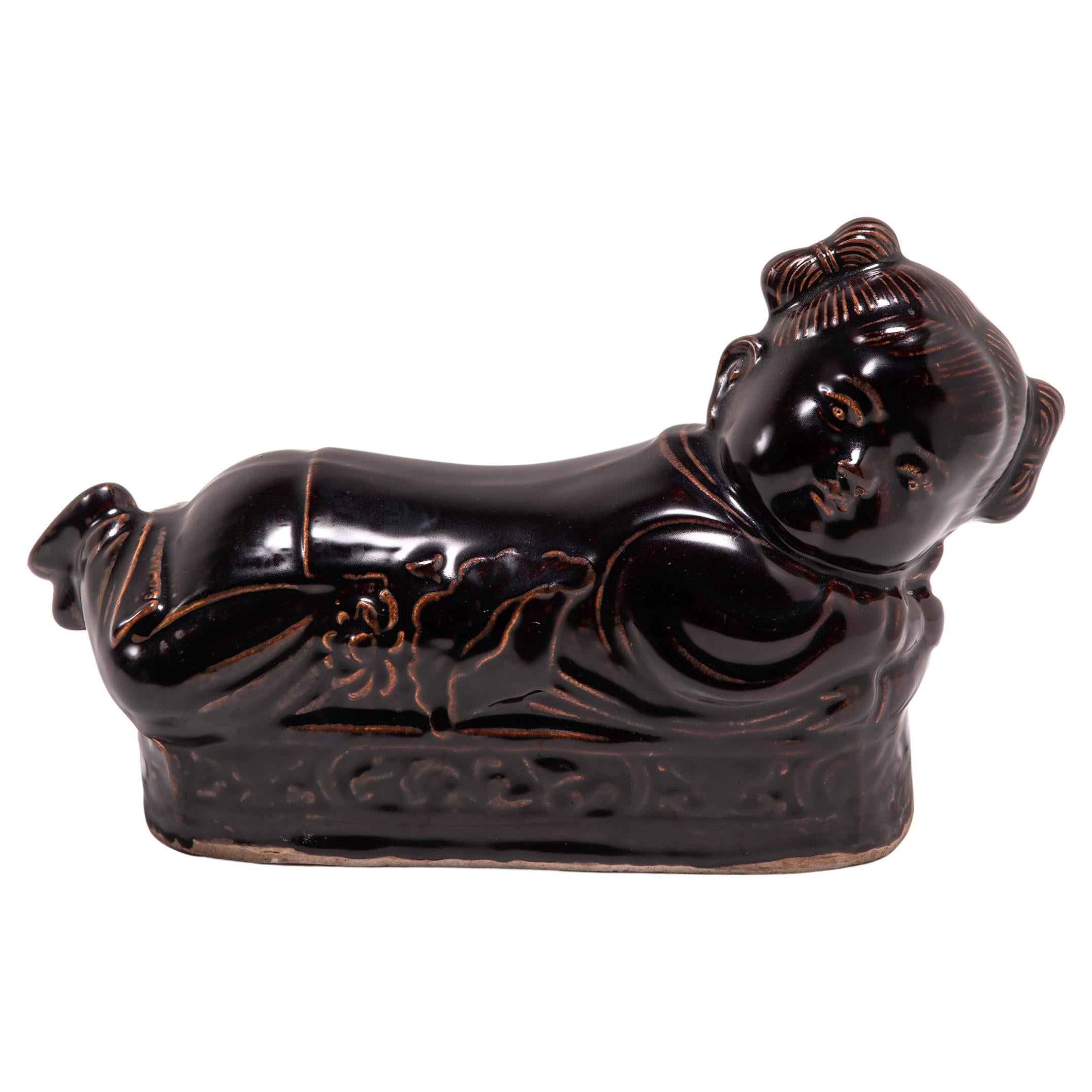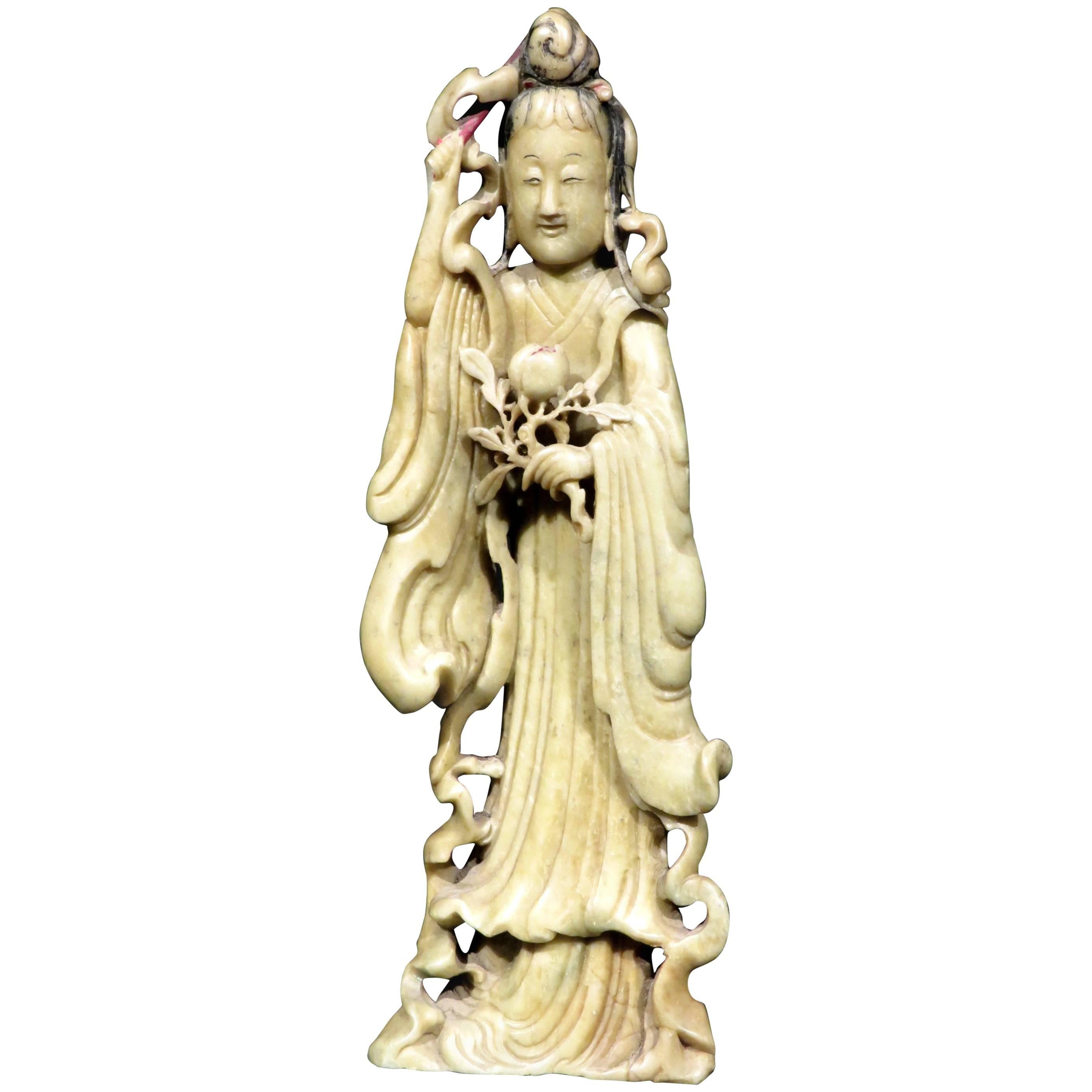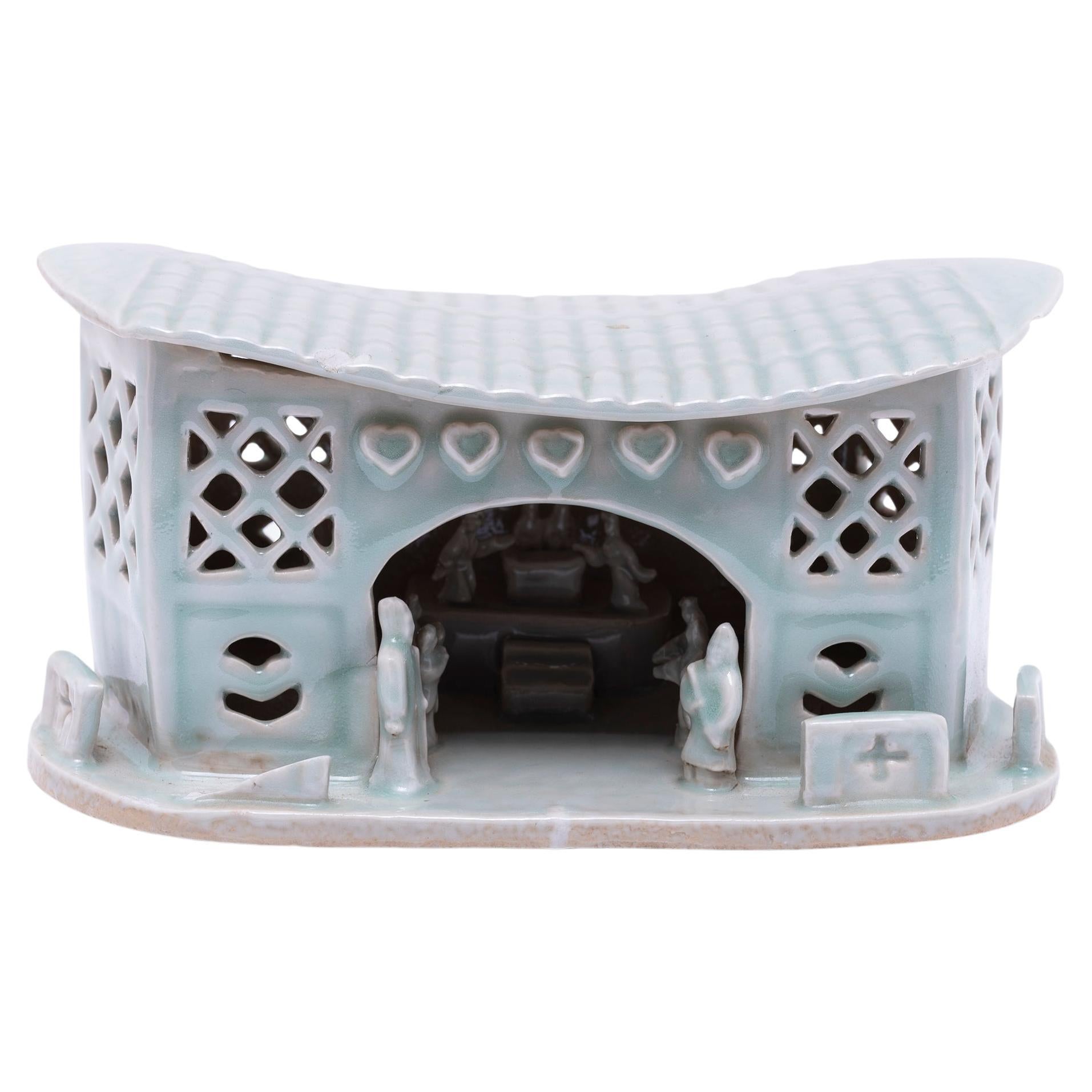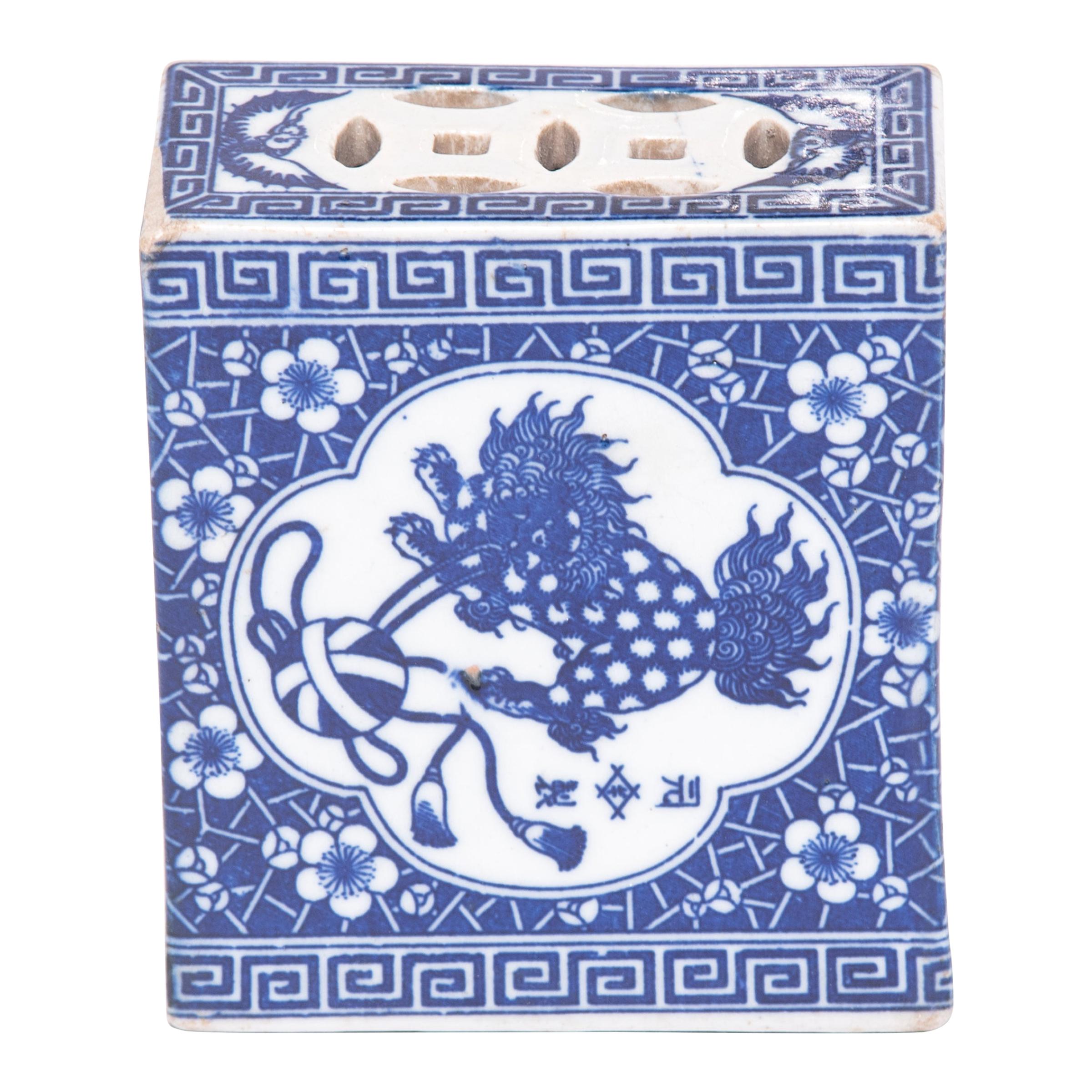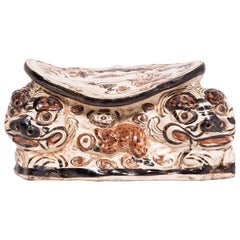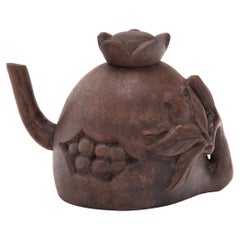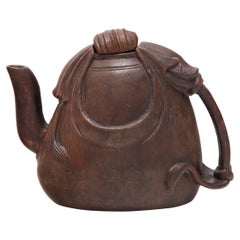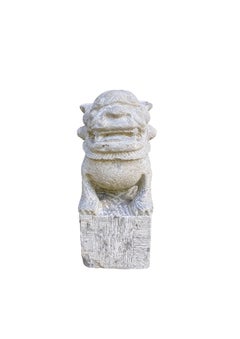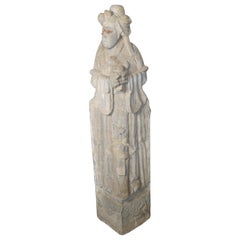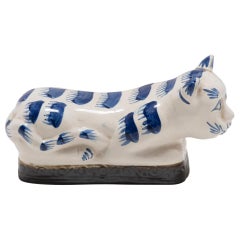
Chinese Blue and White Cat Headrest, c. 1900
View Similar Items
Want more images or videos?
Request additional images or videos from the seller
1 of 6
Chinese Blue and White Cat Headrest, c. 1900
$980List Price
About the Item
- Dimensions:Height: 6 in (15.24 cm)Width: 12 in (30.48 cm)Depth: 5.5 in (13.97 cm)
- Style:Qing (Of the Period)
- Materials and Techniques:Ceramic,Glazed
- Place of Origin:
- Period:
- Date of Manufacture:1900
- Condition:Wear consistent with age and use.
- Seller Location:Chicago, IL
- Reference Number:Seller: BJGG031E1stDibs: LU820013100431
About the Seller
5.0
Platinum Seller
Premium sellers with a 4.7+ rating and 24-hour response times
Established in 1997
1stDibs seller since 2006
1,681 sales on 1stDibs
Typical response time: 1 hour
Authenticity Guarantee
In the unlikely event there’s an issue with an item’s authenticity, contact us within 1 year for a full refund. DetailsMoney-Back Guarantee
If your item is not as described, is damaged in transit, or does not arrive, contact us within 7 days for a full refund. Details24-Hour Cancellation
You have a 24-hour grace period in which to reconsider your purchase, with no questions asked.Vetted Professional Sellers
Our world-class sellers must adhere to strict standards for service and quality, maintaining the integrity of our listings.Price-Match Guarantee
If you find that a seller listed the same item for a lower price elsewhere, we’ll match it.Trusted Global Delivery
Our best-in-class carrier network provides specialized shipping options worldwide, including custom delivery.More From This Seller
View AllChinese Double Guardian Headrest, circa 1900
Located in Chicago, IL
To keep her elaborate hairstyle intact while sleeping, a well-to-do Qing-dynasty woman would use a rigid headrest or neck pillow to keep her head elevated. Whether functional or pure...
Category
Antique Late 19th Century Chinese Qing Animal Sculptures
Materials
Porcelain
Chinese Bamboo Pomegranate Teapot, c. 1900
Located in Chicago, IL
Tea drinking has been an integral part of Chinese culture for centuries, resulting in a wide range of social customs and material traditions. In addition to tea leaves, water, and heat, the art of drinking tea (chayi) calls for a variety of teaware and utensils - both practical and decorative.
This charming teapot dates to the late Qing dynasty and is hand-carved from a hollow length of bamboo in the shape of a ripe pomegranate. The handle is carved to resemble a thin branch, which forks to either side of the teapot bearing long, slender leaves. The teapot has a squat, rounded form and a dark brown finish, reminiscent of Yixing red clay teapots...
Category
Early 20th Century Chinese Qing Sculptures and Carvings
Materials
Bamboo
Chinese Bamboo Cloth Teapot, c. 1900
Located in Chicago, IL
Tea drinking has been an integral part of Chinese culture for centuries, resulting in a wide range of social customs and material traditions. In addition to tea leaves, water, and heat, the art of drinking tea (chayi) calls for a variety of teaware and utensils - both practical and decorative.
This charming teapot dates to the late Qing dynasty and is hand-carved from a hollow length of bamboo to appear as though parceled by a cloth strung with tassels. The teapot has a squat, rounded form and a dark brown finish, reminiscent of Yixing red clay teapots...
Category
Early 20th Century Chinese Qing Sculptures and Carvings
Materials
Bamboo
Chinese Polychrome Seated Ancestor Figure, C. 1900
Located in Chicago, IL
An integral part of traditional Chinese home life, ancestor worship before a domestic altar often featured painted ancestral portraits or tabletop ance...
Category
Early 20th Century Chinese Qing Sculptures and Carvings
Materials
Wood
Chinese Bamboo Cloth Teapot with Arched Handle, c. 1900
Located in Chicago, IL
Tea drinking has been an integral part of Chinese culture for centuries, resulting in a wide range of social customs and material traditions. In addition to tea leaves, water, and he...
Category
Early 20th Century Chinese Qing Sculptures and Carvings
Materials
Bamboo
Chinese Lucky Girl Headrest, c. 1900
Located in Chicago, IL
To keep her elaborate hairstyle intact while sleeping, a well-to-do Qing-dynasty woman would use a rigid headrest or neck pillow to keep her head elevated. Whether functional or purely decorative, such headrests were crafted from a variety of materials and were often decorated with elaborate patterns or symbolic motifs.
This porcelain headrest...
Category
Early 20th Century Chinese Qing Ceramics
Materials
Porcelain
You May Also Like
Limestone Fu Dog Guardian Figure from China, c. 1900
Located in Jimbaran, Bali
This limestone carving depicts a Fu Dog Guardian figure and was carved from a solid block. Sculptures such as these were used to protect ones home from bad spirits or bad luck. They ...
Category
Mid-20th Century Chinese Qing Figurative Sculptures
Materials
Limestone
$960 Sale Price / set
20% Off
Carved Yellow Soapstone Figure of Guanyin, Chinese circa 1900
Located in Ottawa, Ontario
The finely carved full length figure of 'The Goddess of Compassion, Kindness & Mercy' shown attired in flowing robes, her hair worn in high chignon with her face effecting a serene a...
Category
Early 20th Century Chinese Qing Sculptures and Carvings
Materials
Soapstone
Antique Carved Stone Temple Sculpture of a Woman from, China, Late Qing, c 1900
Located in Yonkers, NY
A Chinese carved stone temple sculpture of a woman circa 1900s. This Chinese sculpture features a woman wearing an elaborate headdress and flowing robes and holding a bouquet of flow...
Category
20th Century Chinese Qing Sculptures and Carvings
Materials
Stone
$11,249 Sale Price
25% Off
Chinese Porcelain Blue and White Recumbent Cat, circa 1900
Located in New York, NY
With underglaze blue fish as decoration.
Category
Antique Early 1900s Chinese Animal Sculptures
Materials
Porcelain
Large Chinese Carved and Lacquered Buddha, Qing Dynasty, 19th Century
Located in Austin, TX
A large and magnificent near life-sized Chinese carved and lacquered wood figure of a Buddha, Qing Dynasty, 19th century or earlier, southern China.
The figure likely represents one of the Five Tathagatas, also known as Dhyani Buddhas or Wisdom Buddhas. More specifically, either Amitabha or Amoghasiddhi. Amitabha is the Buddha of infinite light, and represents the wisdom of observation and recognition. Amoghasiddhi is the Buddha of accomplishment, and represents the wisdom of perfected practices. The size and scale of the Buddha indicates it was made for temple worship.
The large Buddha is portrayed seated in vajrasana, or full lotus position, with the soles of both feet facing up. His elegant hands, with impossibly long and slender fingers, perform shuni mudra, the gesture of bestowing patience. His right arm is bent at the elbow, the right hand raised to heart level. The left arm resting gently in his lap, the left hand at navel level.
The Buddha is dressed in voluminous robes that wrap around his shoulders and body, and tied at the waist. The heavy fabric draping and pooling elegantly all around his robust body. His broad chest and right arm exposed.
The Buddha's face is both solemn and beatific - his expression seeming to change depending on the angle of view. The most notable feature of his face is the large urna to the center of his forehead, set between a pair of painted, high arching brows over heavily lidded almond shaped eyes. A strong nose is set above a small mouth pursed in an ever so slight smile. Long pendulous earlobes touch his shoulders.
The Buddha's hair arranged in the typical fashion, with "spikes" representing tight curls. A prominent ushnisha rises from the crown of his head, covered by more hair, and topped with a rounded protuberance.
The Buddha is constructed from several blocks of wood, joined, carved and lacquered a deep red-brown with gold flecks...
Category
Antique 19th Century Chinese Qing Sculptures and Carvings
Materials
Wood
Chinese Qing Dynasty Lacquered Wood Guanyin, 18th Century, Southern China
Located in Austin, TX
A Chinese early Qing Dynasty carved and lacquered wood figure of Guanyin, Southern China, 17th/18th century.
Guanyin, the Bodhisattva of Compassion and Mercy, is portrayed seated in dhyanasana, one hand raised in viktara mudra, the gesture of teaching and discourse.
The great bodhisattva is dressed in heavy, loose robes tied at the chest, with a mantle draped over his shoulders. He looks serenely outwards from heavily lidded eyes. Guanyin's face carved beautifully with somewhat feminine features. A large five pointed crown sits upon his head. The larger leaves of the crown carved with indistinct images of the Buddha.
The statue was originally fully lacquered in the deep red gilt lacquer typical of Southern Chinese Buddhist sculpture...
Category
Antique Early 18th Century Chinese Qing Sculptures and Carvings
Materials
Wood
Recently Viewed
View AllMore Ways To Browse
Gray Ceramic Cat
White Ceramic Cat
Chinese Headrest
Blue Cat Ceramic
Antique Chinese Headrest
Chinese Ceramic Cat
Qing Dynasty Pillow
Chinese Pillow Headrest
Headrest Ceramic
Sleeping Cat Sculpture
Chinese Cat Headrest
Italy Ceramic Bird
Panther Sculpture France
19th Century Swiss Wood Carving
Antelope Sculpture
Brienz Black Forest
Sculpture Ceramic Fish Vintage
Vintage Gold Dove
